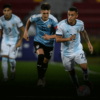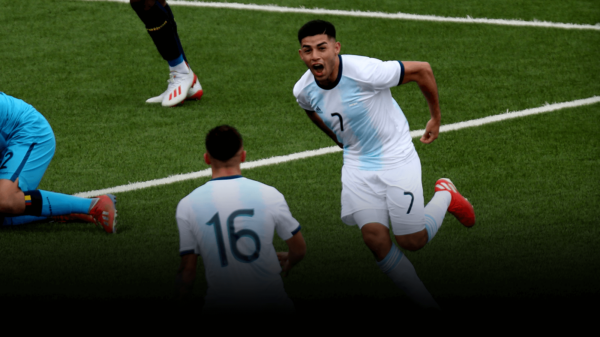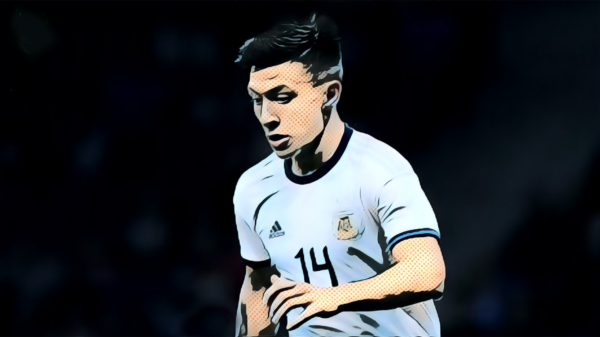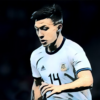60 years after these two sides met in the South American Football Championship final, they face up against each other in the modern version of the tournament. While Argentina may be favourites for the 2015 Copa America final, hosts Chile will prove to be a difficult opponent. Tom Robinson has a look at the key battles for the clash at the Estadio Nacional.

Saturday’s final sees the cross-Andes clash between hosts Chile and World Cup finalists Argentina, with both of whom looking to end their barren streak without silverware at long last. In a Copa full of on and off the field misdemeanours, it is refreshing that the two best footballing sides will contest the final. Both Chile and Argentina boast the highest possession stats, passing accuracy, and goals scored which should, on paper, set up a closely fought battle.
But for all their merits and attacking talent, serious doubts remain about each of their backlines. Chile’s lack of aerial prowess and high line has yet to truly cost them but remains an area of weakness that most of their opponents have targeted with varying levels of success. Despite conceding just three goals, Argentina have also looked suspect and sluggish at the back and under Martino their top heavy balance is exacerbated more than it was under the pragmatic Sabella. For the neutral at least, it should lead to an entertaining spectacle.
At the highest level the margins are always tight and this match is likely to be won or lost on a few moments or particular duels that could tip the balance in one teams favour. With that in mind, the following battles will be some of the key encounters that will certainly shape the outcome of Saturday’s final.
VALDIVIA VS MASCHERANO
Much of Chile’s good play has centred around the impish Jorge Valdivia who possesses that rare ability to find a pocket of space, shimmy past a challenge or thread a killer through ball. Perhaps most importantly in this high octane Sampaoli side of perpetual motion, Valdivia is the man who has the presence of mind to pause that extra second, puts his foot on the ball and alters the tempo and flow of the game.
He is the conductor, a romantic throwback to la pausa, that seemingly lost art in modern football. His three assists see him joint top of the charts with the incomparable Messi and, alternating between the false 9 and number 10 role in Chile’s flexible 4-3-3, has become integral alongside more vaunted stars.
Standing in his way will be Argentina’s tenacious midfield warrior Javier Mascherano who, shielding the back four, will be tasked with nullifying Valdivia’s threat. The star performer in the Albiceleste’s run to the World Cup final,Masche – as he is affectionately known – typifies the hallowed number 5 role for his country despite largely featuring at centre back for Barcelona.
Indeed, his time in Catalonia has helped him develop into more of a technical player than he is often given credit for and along with his grit, determination and excellent reading of the game will be important in not only shackling Valdivia but also then using the ball wisely to initial attacks with Chile on the back foot. Stop Valdivia and you might stop Chile. Fortunately for Argentina, there is probably no-one better than Mascherano for the job.
HOW TO STOP MESSI?
On the flipside, Chile’s primary defensive aim will be devising the unenviable task of nullifying a resurgent Leo Messi. Although Messi has only one goal in this Copa and has not scored for Argentina from open play in a competitive game for over a year, he showed exactly why he is such a unstoppable force with his breath-taking semi-final performance against Paraguay in which he played a major role in all six goals.
After a fantastic treble winning season with Barcelona, Messi looks rejuvenated, a far cry from the knackered version of himself at the World Cup, and has completed more than double the dribbles per game than anyone else in the Copa. It might be probably the most self-evident fact in football but stopping Messi will be paramount for Chile.
Club teammate but rival goalkeeper on Saturday, Claudio Bravo, has rightly pointed out that Chile should not overly focus on Messi but Argentina as a whole. Therein lies another danger of Messi; his ability to afford others extra time and space while more attention is focused on him. Perhaps one tactic would be to try and cut off the supply to Messi by employing their typical high pressing, forcing the vulnerable back line into mistakes and giving the likes of Biglia, Banega and Zabaleta no room to breathe or time to get the ball to the star man.
As the tournament has shown, Chile, for all their free flowing football, are not averse to some underhand tactics – no pun intended – to disrupt their opposition. Do not be surprised then to see the likes of Vidal and Medel get stuck into Messi early on to try and put him off his game from the start. Easier said than done.
SAMPAOLI VS MARTINO
The game could well be decided as much by the men in the dugouts and the players on the pitch and there will be a fascinating battle of minds between Jorge Sampaoli and Gerardo Martino. The Argentine pair share some points of reference, most notably in their links to Marcelo Bielsa, which adds an extra dimension to the contest.
When discussing Chile and Sampaoli it is obligatory to mention Bielsa and his spell managing the national team gave Chile a much needed identity. At club level, no club epitomised Bielsa’s approach as much as Jorge Sampaoli’s Universidad de Chile who for a while were playing the most attractive football in all of South America, particularly in their devastating Copa Sudamericana win in 2011.
On assuming the national team post, Sampaoli has continued in Bielsa’s footsteps of hard pressing, swashbuckling attacking football. Having said that, there is flexibility within the strict style of play as Chile can switch from a back four to a back three in the blink of the eye and their forwards can interchange at will.
Martino, on the other hand, is somewhat more practical although his roots are firmly in a Bielsa brand of football, having played under him at Newell’s. Indeed, his possession orientated style of play at hometown club Newell’s saw him lift the 2013 Torneo Final before his ill-fated move to Barcelona. However, his spell at the helm of Paraguay displayed his pragmatism by favouring a more direct, long-ball game that suited the players at his disposal. Tata took Paraguay close to beating Spain in the quarters of the 2010 World Cup and to the final of the 2011 Copa America, albeit by drawing all their games. Now at Argentina and with a higher calibre of player he is able to play his preferred attacking style but he is yet to find a truly clinical edge.
How each manager deals with the opposition’s principal threats, as well as the substitutions they make during the game, could be crucial in deciding the outcome of the final. Both will know each other’s’ tendencies and their commitment and belief in attacking football has all the makings of a classic.
HOME ADVANTAGE VS WEIGHT OF EXPECTATION
Admittedly a more abstract battle but it is nevertheless one that will have an all too real effect on the game. On the one hand, the backdrop of a cauldron-like atmosphere in the national stadium in Santiago will serve as a brilliant motivation for the Chilean side – the proverbial twelfth man if you will – as they bid to win their first Copa in 99 years. Furthermore, that hostile atmosphere could intimidate the Argentinian team, giving the home team a distinct advantage, particularly in a game of this magnitude.
On the other hand, that near century of pressure could have the reverse effect and act as a crippling weight of expectation that could overwhelm the Chilean side. As we saw in Brazil, the emotional and mental aspect of playing in front of an expectant home crowd was a simmering and bubbling undercurrent throughout the tournament which culminated in the debacle in Belo Horizonte.
Given that this is widely perceived as Chilean’s finest generation playing on home soil – with a kind run to the final I might add – the pressure and expectation must be absolutely huge and, when coming up the best opposition they have faced, could play into Argentina’s hands.
So this internal, emotional battle will be one going on inside every player’s mind and will go a long way to determine the level of their performances on Saturday. It’s hard to say how they will react to this unique pressure but games like this don’t build character, they reveal it.
For more reading on the 2015 Copa America, head this way.
Written by Tom Robinson
- 2020 Argentinian Primera: Young Players To Watch - November 26, 2020
- Scout Report: Agustin Urzi | Banfield And Argentina Winger - October 13, 2020
- 2020 Brasileirao’s 10 Young Players To Watch - September 10, 2020


























































